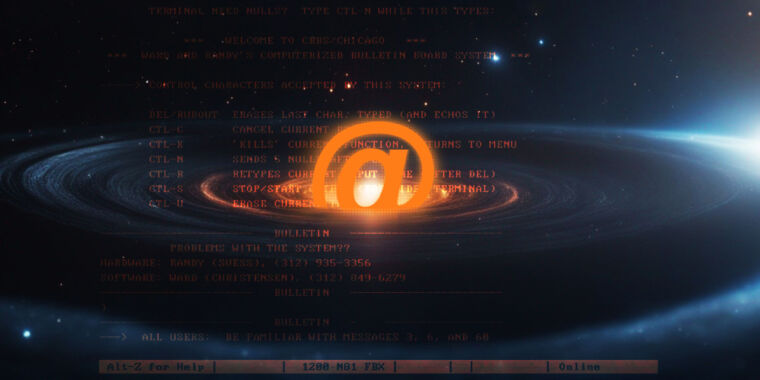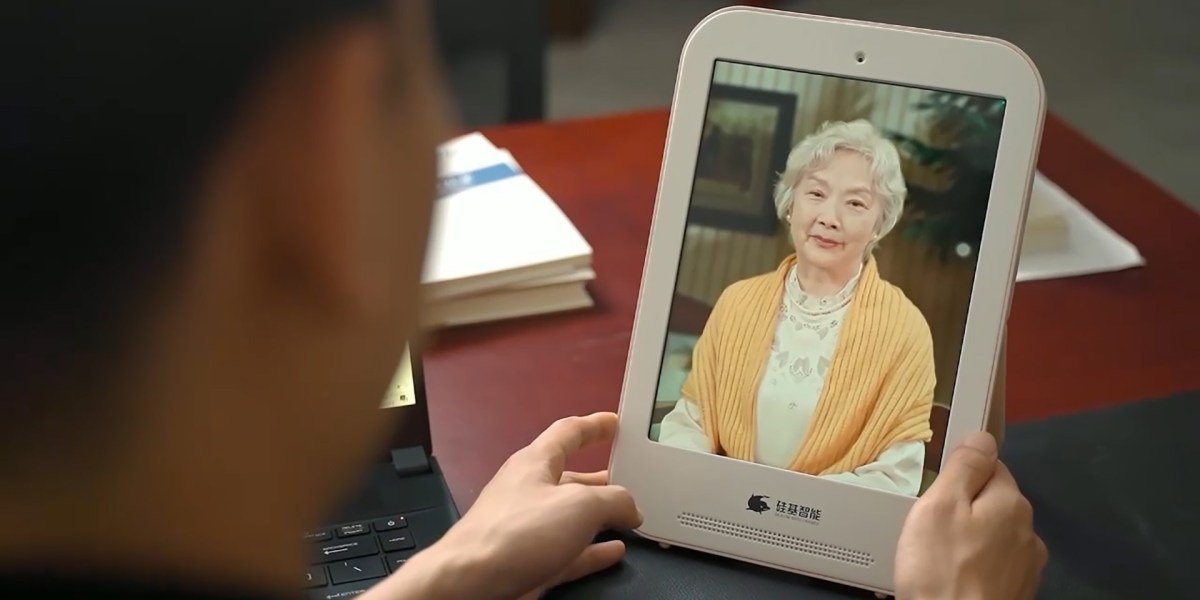This week's best things
A history of online messaging, more on Chinese deepfakes of deceased loved ones, Digital Works Conference catchup, Chief Digital Officers in 2014, Apple missing the mark, burnout pushing workers to use AI tools, weird Simpsons, and goats.

I'm writing this from Košice in very eastern Slovakia.
First post: A history of online public messaging
The internet is, ultimately, a communication tool. This article in Ars Technica is a great history of online messaging from 1969 to the 2020s which is also, basically, the story of the internet.
"In 1971, Ray Tomlinson wrote the first inter-computer messaging program, SNDMSG. Because he had to differentiate between the receiver’s username and the name of the computer they were using, he needed a character that wouldn’t be part of either. He hit “SHIFT-P” on the Model 33 Teletype, got an @, and the rest was history. Email was born"

Deepfakes of your dead loved ones are a booming Chinese business
I've shared a few things on this topic in the past, but this article in MIT Technology Review is a fascinating read.
"Once a week, Sun Kai has a video call with his mother. He opens up about work, the pressures he faces as a middle-aged man, and thoughts that he doesn’t even discuss with his wife. His mother will occasionally make a comment, like telling him to take care of himself—he’s her only child. But mostly, she just listens.
That’s because Sun’s mother died five years ago. And the person he’s talking to isn’t actually a person, but a digital replica he made of her—a moving image that can conduct basic conversations. They’ve been talking for a few years now. "
As I said before, this is a completely understandable and predictable use of this technology (the Black Mirror episode Be Right Back aired in 2013 and is based on a similar premise).
However it also opens up serious and worrying considerations around ethics, safeguarding, and fraud, which this Guardian article touches on "Digital recreations of dead people need urgent regulation, AI ethicists say".
It's interesting to contrast the two realities that these articles describe.
The MIT Technology Review piece clearly describes how this stuff is already happening at scale whereas the Guardian piece doesn't seem to recognise that, merely warning that "such services, which are already technically possible to create and legally permissible, could let users upload their conversations with dead relatives to “bring grandma back to life” in the form of a chatbot, researchers from the University of Cambridge suggest".

Digital Works Conference catchup
The recordings from last month's Digital Works Conference in Leeds are now available to watch when you buy a Digital Pass. It was a really great couple of days of discussion, new ideas, and smart advice.
CDOs, the new Chief Electrical Officers?
I was doing some research this week for something I'm writing and came across this 2014 blog post from Kati Price (Head of Experience & Digital at the V&A).
In it, Kati reflects on the keynote at that year's MuseumNext conference in which Kovan J Smith compared the (then) trend towards organisations creating the role of Chief Digital Officers (CDOs) with the early 20th century phenomenon of corporations having Chief Electrical Officers.
"The risk with having a CDO, Koven argued, was that it excuses people of not needing to know about digital."
It's interesting to reflect on how much has changed over the last decade (not much).

Apple apologizes for iPad ‘Crush’ ad that ‘missed the mark’
You might have spotted Apple's recent iPad ad which annoyed a lot of people, including Hugh Grant.
Turns out that an ad portraying the stomping into dust of all human creativity doesn't necessarily make your product look that great.
Anyway, unsurprisingly, Apple have backtracked.
“Creativity is in our DNA at Apple, and it’s incredibly important to us to design products that empower creatives all over the world,” Myhren told Ad Age. “Our goal is to always celebrate the myriad of ways users express themselves and bring their ideas to life through iPad. We missed the mark with this video, and we’re sorry.”
There was all sorts of discourse about it this week, including lots of people having very strong opinions about what Steve Jobs would've made of it.
I do think that this points to an emerging point of tension though (companies like Adobe will, I think, experience something similar soon). Companies that have built their success on aligning themselves with 'creatives' and leveraging the kudos that comes with that are now moving into creating products and services that directly threaten the livelihoods of the people they've purported to be on the side of.
/cdn.vox-cdn.com/uploads/chorus_asset/file/25440969/videoframe_48666.png)
Burnout Is Pushing Workers to Use AI—Even if Their Boss Doesn’t Know
I did a webinar this week and one of the questions was whether cultural organisations should be using AI tools.
This is something that Katie and I talked about on a recent episode of the Digital Works Podcast.
I can see the temptation, but without some guiding principles, guidelines, or an actual AI policy, I think the institutional risk outweighs the benefits.
This article in Wired points out that it may not matter what institutional policy is, workers are starting to use these tools anyway.
"Seventy-five percent of people in desk jobs are already using AI at work, and the amount of people using AI has nearly doubled over the past six months, the report found. The vast majority of workers using AI—regardless of whether they are baby boomers or Gen Z—are “bringing their own AI tools” rather than waiting for their companies to guide them."

The Simpsons, but in the 1950s, and sinister
If you've been on any social media platform over the past 12 months you've probably seen one of the many AI-generated versions of a popular film in a different context (1920s Star Wars seemed to do the rounds most virally).
This week I saw this version of a trailer for The Simpsons, if The Simpsons was live action and set in the 1950s, and it is...sinister as hell. Krusty's lips will haunt my nightmares for years to come.
The Simpsons in the 1950s pic.twitter.com/ZgGPK3EMlg
— demonflyingfox (@demonflyingfox) April 28, 2024
And as a palate cleanser, here is how they stop baby goats from hurting each other.
Today I learned that aggressive baby goats have to wear horn noodles to avoid hurting each other pic.twitter.com/22PX4iBCC9
— Nature is Amazing ☘️ (@AMAZlNGNATURE) May 4, 2024



